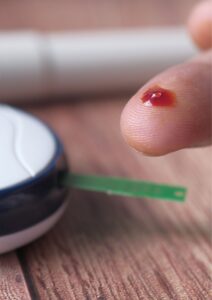Let’s take a closer look at the extraordinary saga of diabetes, from its first mentions in ancient manuscripts to modern-day advancements that have revolutionized treatment.
Unravelling the Ancient Enigma: The Dawn of Diabetes
When we say diabetes, images of glucose monitors and insulin pens might pop into your mind. But did you know this modern menace was recognized thousands of years ago? Believe it or not, ancient scholars in Hindu and Egyptian civilizations identified symptoms remarkably similar to those of diabetes.
The term’ Diabetes’ was first penned by Apollonius of Memphis. But the disease got its sweet moniker from an Indian Scholar, Sushruta, who aptly called it ‘Madhumeha’, or ‘honey urine’. Sushruta and Charaka, a surgeon, intuitively recognized two types of the disease, much like the type 1 and type 2 diabetes we know today.
Seeds of Treatment: From Persia with Love
Avicenna, the famed Persian physician, made notable strides in understanding diabetes. Besides identifying abnormal appetite and diabetic gangrene, he astutely used plant seeds like lupin, fenugreek, and zedoary for treatment. Talk about being ahead of your time!
Sweet Discoveries: The Sugar Connection
Enter the 18th century. Matthew Dobson confirmed what might have seemed obvious but was fundamentally important – people with diabetes had excess sugar in their blood and urine. John Rollo, the British Surgeon-General, added ‘mellitus’ to the term diabetes, alluding to the sweet nature of the urine.

The Liver, The Pancreas, and The Missing Link
Claude Bernard, a French Physiologist, uncovered the liver’s crucial role in glucose metabolism. The plot thickened when Paul Langerhans discovered cell clusters within the pancreas, the now-famous Islets of Langerhans. The stage was set for Joseph von Mering and Oskar Minkowski to unravel the pancreas’s key role in diabetes.
Starvation, Insulin, and Nobel Prizes
In the 20th century, they brought about monumental advancements. Dr Frederick Allen proposed managing diabetes through starvation – an innovative idea. But the real game-changer was the discovery of insulin by Dr Fredrick Banting and Professor John James Rickard Macleod. They walked away with a well-deserved Nobel Prize for their life-saving work.
Decoding Diabetes: Distinguishing Types and Deciphering Insulin
British scientist, Sir Harold Percival (Harry) Himsworth, differentiated two main types of diabetes, refining our understanding of the disease. Frederick Sanger’s elucidation of human insulin’s structure earned him a Nobel Prize and paved the way for David Goeddel to produce synthetic “human” insulin using recombinant DNA technology.
From ancient scholars deciphering ‘honey urine’ to the creation of synthetic insulin, the journey of diabetes has been as multifaceted as it has been revolutionary. Today, as we stand on the shoulders of these scientific giants, we continue to unravel the mysteries of diabetes, inching closer to a future where this ancient disease might finally meet its match. The saga continues!








